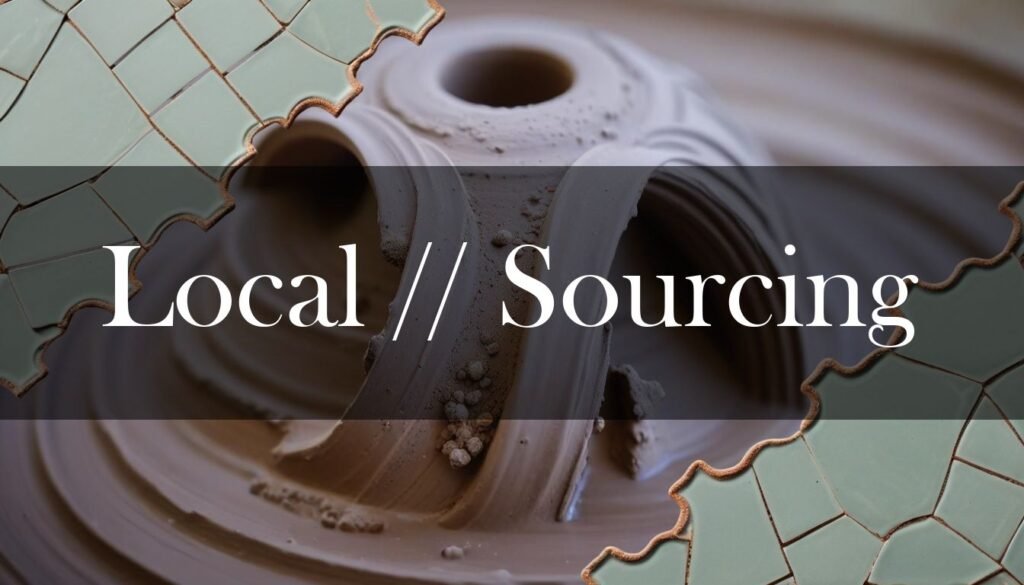There’s something magical about working with clay sourced from the very ground beneath our feet. It connects us to the earth in a profound way, grounding our art in the unique character of our local landscape. Exploring local clay sourcing opens up a world of possibilities, offering potters a chance to deeply engage with their environment.
In the United States, different regions offer distinct types of clay, each with its own personality. Along the Gulf of Mexico Coastal Plain, you might find ball clay, known for its plasticity, containing kaolinite, mica, and quartz. Central Georgia boasts kaolinite, formed from the weathering of rocks in warm, humid climates. Bentonite, composed of smectite minerals, can also be found in the Gulf Coastal Plain. Common clay and shale are widespread across the U.S., often used for bricks and other construction materials. Knowing the specific types of clay available in your region is essential, as each type will influence the workability, firing temperature, and final characteristics of your pottery.
Knowing the specific types of clay available in your region is essential, as each type will influence the workability, firing temperature, and final characteristics of your pottery.
Before you start digging, it’s crucial to understand the regulations surrounding clay sourcing on public lands. The Bureau of Land Management (BLM) generally allows collecting reasonable amounts of mineral materials like clay for non-commercial purposes, but only in areas where it’s not expressly prohibited. It’s illegal to remove or alter public property, including natural formations and mineral deposits, without written permission. Always check with the local BLM office or the managing agency of the specific public land to get detailed information and necessary permissions. Remember, cultural materials like pottery shards are protected, and removing them is against the law.
Once you’ve sourced your wild clay, the real adventure begins: processing it into usable material. This involves several steps, starting with drying the clay completely and breaking it into smaller pieces, which helps in easier breakdown and removal of impurities like pebbles and roots. Next, create a slurry by immersing the clay in water. For stubborn clays, drying them completely before adding water can help. Then, screen the slurry through progressively finer sieves to remove any remaining impurities. Sieving down to 100 microns can remove even fairly small organic particles. After sieving, de-water the clay by letting it settle and siphoning off the excess water, or by using a porous container like a plaster bowl. Test the clay by creating small items and firing them at different temperatures, adjusting the clay body as needed by adding materials like silica or bentonite to modify plasticity. Temper the clay with non-plastic materials like sand or grog to prevent shrinkage and cracking. Finally, wedge the clay thoroughly and store it in airtight bags to maintain its moisture.
- Dry the clay completely and break it into smaller pieces.
- Create a slurry by immersing the clay in water.
- Screen the slurry through progressively finer sieves.
- De-water the clay.
- Test the clay by creating small items and firing them at different temperatures.
- Temper the clay with non-plastic materials.
- Wedge the clay thoroughly and store it in airtight bags.
Keep in mind the environmental impacts of clay sourcing, such as habitat destruction, erosion, and water depletion. Minimize these impacts by sourcing recycled and local clay, conserving water, using energy-efficient kilns, and opting for non-toxic glazes. By doing so, you can ensure your pottery practice is as sustainable and eco-friendly as possible.
Remember: Minimize environmental impacts by:
- Sourcing recycled and local clay.
- Conserving water.
- Using energy-efficient kilns.
- Opting for non-toxic glazes.
Connecting with local pottery clubs and guilds is a fantastic way to learn from experienced potters who work with regional clay. In North Carolina, the ClayWorks Potters Guild offers opportunities to learn and share experiences. The Carbondale Clay Center in Colorado provides classes and studio space. Round Rock Community Clay in Texas offers a supportive environment for potters of all levels. These organizations provide a wonderful way to connect with fellow enthusiasts, share knowledge, and celebrate the unique qualities of your local clay. Exploring local clay sourcing is a rewarding journey that deepens your connection to the earth, enhances your artistic expression, and fosters a sense of community.





